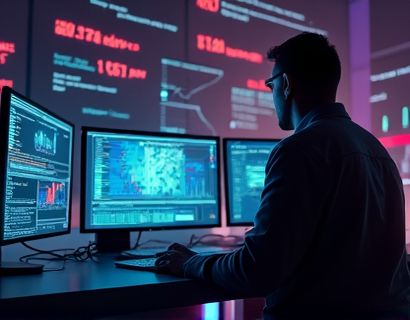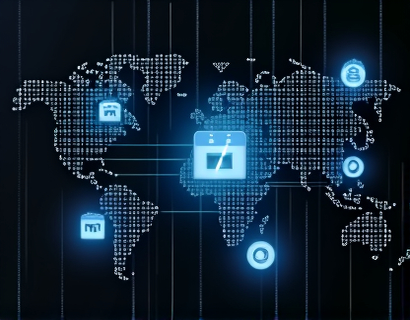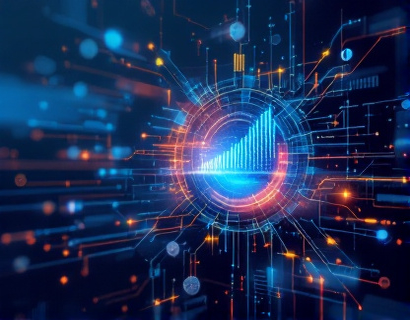Blockchain-Powered Asset Tokenization: Revolutionizing Market Accessibility and Liquidity for Real-World Assets
In recent years, the emergence of blockchain technology has transformed various sectors, and one of the most promising applications is asset tokenization. This innovative approach allows real-world assets to be represented as digital tokens on a blockchain, creating a secure, transparent, and efficient ecosystem for asset management. By bridging the gap between physical assets and digital technology, blockchain-powered asset tokenization is revolutionizing market accessibility and liquidity, providing significant benefits for investors and asset holders alike.
Understanding Asset Tokenization
Asset tokenization refers to the process of converting ownership rights of a real-world asset into a digital token that can be traded on a blockchain. This process involves creating a digital representation of the asset, which can include anything from real estate and art to commodities and financial instruments. Each token represents a fraction of the asset, allowing for easier transfer and trading among investors.
The primary goal of asset tokenization is to enhance liquidity and accessibility in the market. Traditional asset markets often face challenges such as high entry barriers, illiquidity, and lack of transparency. By utilizing blockchain technology, asset tokenization addresses these issues, making it easier for individuals and businesses to invest in and manage their assets.
The Benefits of Blockchain-Powered Asset Tokenization
1. Enhanced Liquidity
One of the most significant advantages of asset tokenization is the enhancement of liquidity. In traditional markets, many assets are illiquid, meaning they cannot be easily bought or sold without a significant loss in value. Tokenization allows assets to be divided into smaller, tradable units, enabling a broader range of investors to participate in the market. This fractional ownership model increases the number of potential buyers and sellers, ultimately leading to a more liquid market.
2. Increased Accessibility
Asset tokenization democratizes access to investment opportunities. Traditionally, high-value assets such as real estate or fine art have been reserved for wealthy individuals or institutional investors. By tokenizing these assets, smaller investors can purchase fractions of them, lowering the financial barrier to entry. This increased accessibility opens up new investment opportunities for a diverse range of individuals, fostering a more inclusive financial ecosystem.
3. Transparency and Security
Blockchain technology provides a secure and transparent environment for asset management. Each transaction involving a tokenized asset is recorded on the blockchain, creating an immutable and publicly accessible ledger. This transparency reduces the risk of fraud and enhances trust among investors. Additionally, the decentralized nature of blockchain technology ensures that no single entity has control over the asset, further enhancing security.
4. Reduced Costs
Tokenization can significantly reduce the costs associated with asset management. Traditional asset transactions often involve multiple intermediaries, such as brokers, banks, and legal advisors, each charging fees for their services. By utilizing blockchain technology, many of these intermediaries can be eliminated, resulting in lower transaction costs. This cost efficiency benefits both asset holders and investors, making the market more attractive.
5. Faster Transactions
In traditional asset markets, transactions can take days or even weeks to complete due to the involvement of various intermediaries and regulatory processes. Blockchain technology streamlines this process, allowing for near-instantaneous transactions. This speed not only enhances the overall efficiency of the market but also provides investors with greater flexibility in managing their assets.
Real-World Applications of Asset Tokenization
Asset tokenization has a wide range of applications across various industries. Here are some notable examples:
1. Real Estate
The real estate market is one of the most promising sectors for asset tokenization. By tokenizing properties, investors can purchase fractional ownership in real estate assets, making it easier to diversify their portfolios. Additionally, tokenization can simplify the process of buying and selling properties, reducing the time and costs associated with traditional real estate transactions.
2. Art and Collectibles
Art and collectibles have long been considered alternative investments, often requiring significant capital to enter the market. Tokenization allows art pieces and collectibles to be divided into smaller shares, enabling a broader range of investors to participate. This not only increases liquidity in the art market but also provides artists and collectors with new ways to monetize their work.
3. Commodities
Tokenizing commodities such as gold, silver, and oil can enhance market efficiency and accessibility. By creating digital tokens that represent ownership of physical commodities, investors can trade these tokens on blockchain platforms, increasing liquidity and reducing transaction costs. This approach also allows for greater transparency in commodity trading, as each transaction is recorded on the blockchain.
4. Financial Instruments
Financial instruments such as stocks, bonds, and derivatives can also benefit from tokenization. By representing these instruments as digital tokens, investors can trade them more easily and efficiently. Tokenization can also facilitate the creation of new financial products, such as tokenized funds or decentralized finance (DeFi) applications, further expanding the possibilities for investors.
The Role of Blockchain in Asset Tokenization
Blockchain technology plays a crucial role in the asset tokenization process. Its decentralized and secure nature provides the foundation for creating and managing digital tokens. Here are some key aspects of how blockchain supports asset tokenization:
1. Decentralization
Blockchain operates on a decentralized network of nodes, meaning that no single entity has control over the entire system. This decentralization enhances security and reduces the risk of fraud, as transactions are verified by multiple participants in the network. In the context of asset tokenization, this means that ownership and transaction records are secure and tamper-proof.
2. Smart Contracts
Smart contracts are self-executing contracts with the terms of the agreement directly written into code. They automate the process of transferring ownership and managing transactions, reducing the need for intermediaries. In asset tokenization, smart contracts can facilitate the buying, selling, and trading of tokens, ensuring that transactions are executed efficiently and transparently.
3. Interoperability
Blockchain technology allows for interoperability between different platforms and networks. This means that tokenized assets can be traded across various exchanges and marketplaces, increasing liquidity and accessibility. Interoperability also enables the integration of tokenized assets with other blockchain-based applications, such as DeFi platforms, further enhancing their utility.
Challenges and Considerations in Asset Tokenization
While asset tokenization offers numerous benefits, there are also challenges and considerations that must be addressed:
1. Regulatory Compliance
One of the primary challenges facing asset tokenization is regulatory compliance. Different jurisdictions have varying regulations regarding the issuance and trading of digital tokens. Ensuring compliance with these regulations is crucial for the success of tokenized assets. Companies involved in asset tokenization must work closely with legal experts to navigate the complex regulatory landscape.
2. Market Adoption
For asset tokenization to reach its full potential, widespread market adoption is essential. This requires educating investors, asset holders, and industry stakeholders about the benefits and mechanics of tokenization. Building trust in the technology and its applications will be key to driving adoption.
3. Technological Challenges
While blockchain technology has advanced significantly, there are still technological challenges to overcome. Issues such as scalability, transaction speed, and energy consumption must be addressed to ensure that blockchain can support the growing demand for asset tokenization. Ongoing research and development in the blockchain space will be crucial for overcoming these challenges.
The Future of Asset Tokenization
The future of asset tokenization looks promising, with the potential to reshape the way we think about ownership and investment. As technology continues to evolve, we can expect to see increased adoption of tokenized assets across various industries. Here are some trends to watch:
1. Integration with DeFi
Decentralized finance (DeFi) is rapidly gaining traction, and the integration of tokenized assets into DeFi platforms will create new opportunities for investors. Tokenized assets can be used as collateral for loans, enabling investors to access liquidity without selling their assets. This synergy between tokenization and DeFi will enhance market efficiency and accessibility.
2. Growth of Tokenized Funds
Tokenized funds, which allow investors to gain exposure to a diversified portfolio of tokenized assets, are likely to become more prevalent. These funds can provide investors with a convenient way to access a range of investment opportunities while benefiting from the liquidity and transparency of tokenized assets.
3. Increased Institutional Participation
As asset tokenization matures, we can expect to see increased participation from institutional investors. The benefits of tokenization, such as enhanced liquidity and reduced costs, will attract institutional capital to the market. This influx of institutional investment will further legitimize tokenized assets and drive innovation in the space.
Conclusion
Blockchain-powered asset tokenization is revolutionizing market accessibility and liquidity for real-world assets. By leveraging the benefits of blockchain technology, asset tokenization enhances liquidity, increases accessibility, and provides a secure and transparent environment for investors and asset holders. While challenges remain, the future of asset tokenization is bright, with the potential to reshape the investment landscape and democratize access to a wide range of assets. As the technology continues to evolve and gain acceptance, we can expect to see a more inclusive and efficient financial ecosystem that empowers individuals and businesses to unlock the full potential of their assets.










































